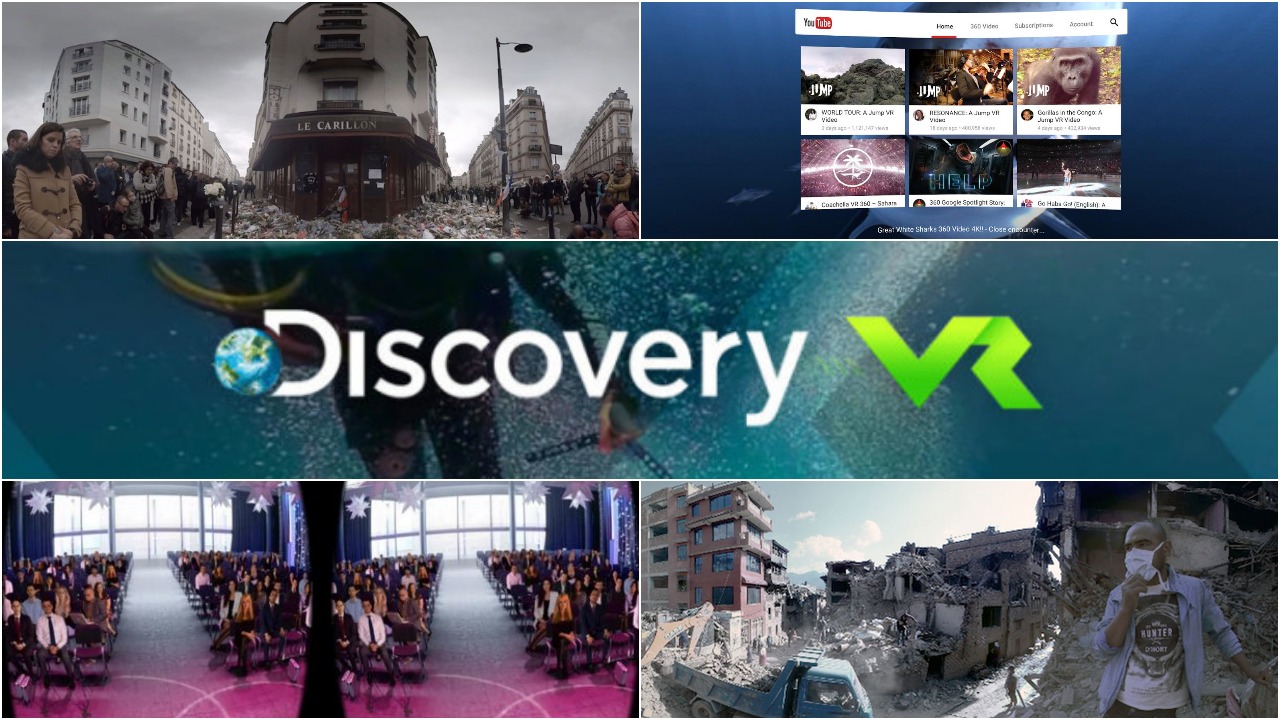
The VR market as a whole, including software and hardware, is expected to top $5.2bn by 2018, up from this year’s $3.8bn. In 2014, the same market only stood at $90m, according to Statista.
With 43 million VR users currently consuming online content worldwide, this is set to triple to 171 million in the next two years. As a result, revenues generated by the sale of headsets will go from 2015’s $685m to $3bn this year and nearly $4bn by 2018.
CBR list five VR apps that are defining experiences.
YouTube and Daydream
YouTube has embraced the VR revolution early and the platform already offers hundreds of 360° videos of all sorts, from underwater videos and data centres, to rollercoasters. Users can download the YouTube app and watch these videos on any phone and VR head-set.
However, YouTube is also going to launch in autumn 2016 a specific VR app called Daydream. This is Google’s platform for high-quality mobile virtual reality.
The new app aims to provide an easier, more immersive way to find and experience virtual reality content on YouTube. It also includes voice search, discovery, and playlist feature.
The app is being built with technology that will also allow users to watch VR videos in 3D. YouTube is also working with the NBA, BuzzFeed and Tastemade to create new types of videos, but has not unveiled any details so far.

Ryot VR
Ryot VR is a free 17MB VR app and one of the first news VR channels in the world. In April 2016, Ryot VR was acquired by Verizon’s AOL’s Huffington Post for over $10m.
The company, named Ryot, essentially sends teams of VR cameramen around the world to cover the latest news. They produce 360° videos which users can then watch on any VR headset.
Teams have been sent to all sorts of scenarios including earthquake hit Nepal, Ebola affected countries and riot zones.
Under the Huffington Post leadership, the company has also produced news roundups all in VR. Ryot runs on Android 4.0.3 and up.

NYT VR
The New York Times is another media corporation that has embraced VR. Last year the company bought one million Google Cardboards to give to readers in a bid to take the technology to the masses.
Since then, the company has also stepped into making its own VR content. At the moment, the NYT VR team is only releasing one video per month.
Releases so far include The Contenders, a short documentary film that follows the campaigns of Hillary Clinton and Donald Trump ahead of the US’ Presidential election.
The app is free for any phone running iOS 8 or later, and Android 4.3 or later. Users also do not have to download the video to watch, they can simply stream it from the app.
Public Speaking VR
For those whose nerves get the best out of them when speaking to an audience, there is a Public Speaking app that recreates conference rooms and auditoriums where the user can practise his or her public speaking skills.
The app produces a photo-realistic environment with the audience moving and behaving as they would at a real event. Scenarios include a 300+ audience, face to face interviews, and meeting rooms with 15 people.
The application also recreates common event’s noises and allows the user to upload an upcoming presentation slides into the virtual scenario so he or she can practice for a future talk.
The app runs on Android 4.1 or later and weights 65MB. It has been developed by VirtualSpeech.

Discovery VR
Swimming with sharks, walking through different forests on Earth or experiencing being a fisherman in Alaska, is all possible with Discovery Channel’s VR video portfolio.
The documentary channel has entered the VR game strongly and has produced several VR videos of some of its biggest TV hits including Mythbusters, Pressure Chamber or Wild Life.
Users can download the app from the Android store, and this will work on any device running on Android 4.2 and up.
The application can be viewed both on Google’s Cardboard or Samsung Gear device.








